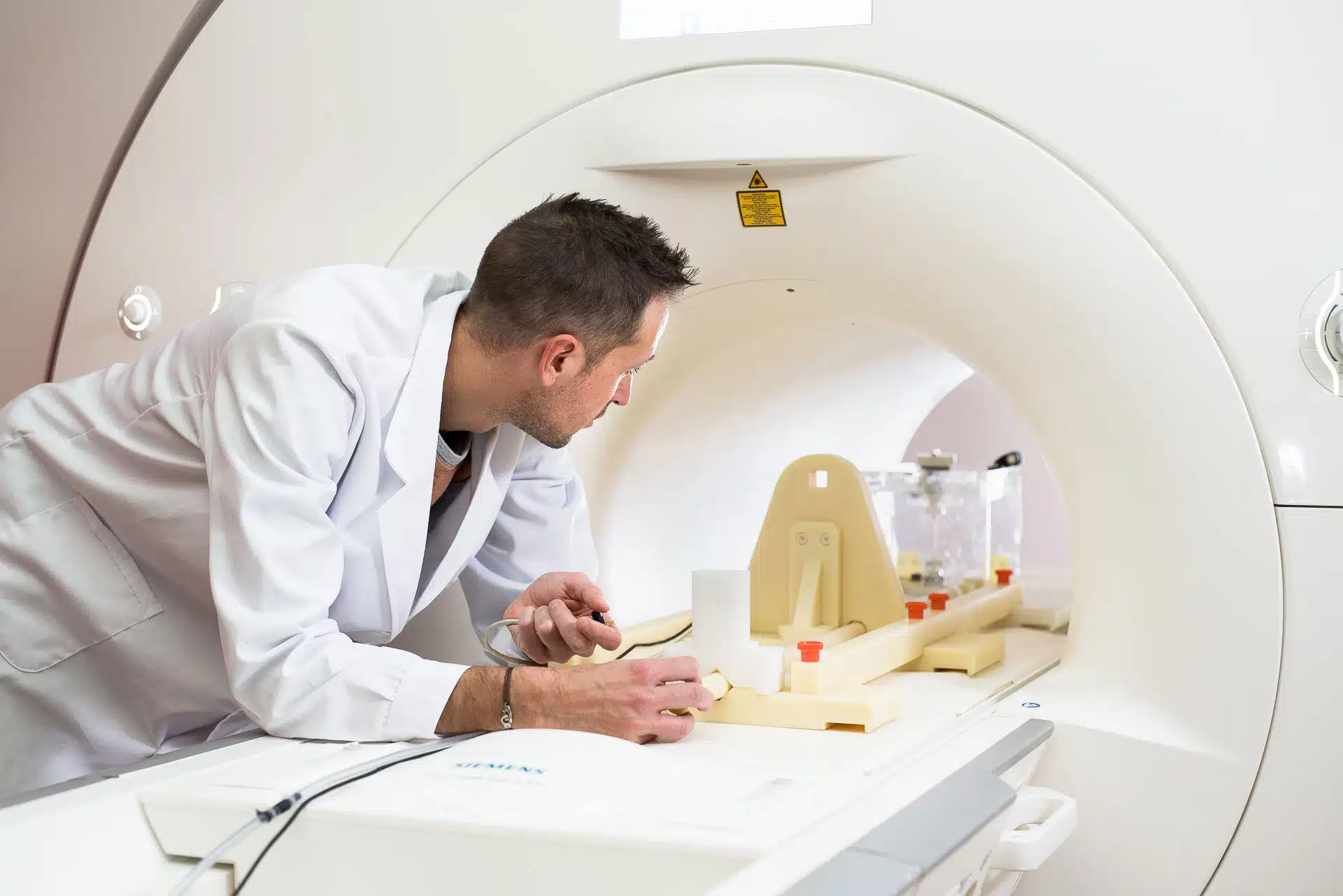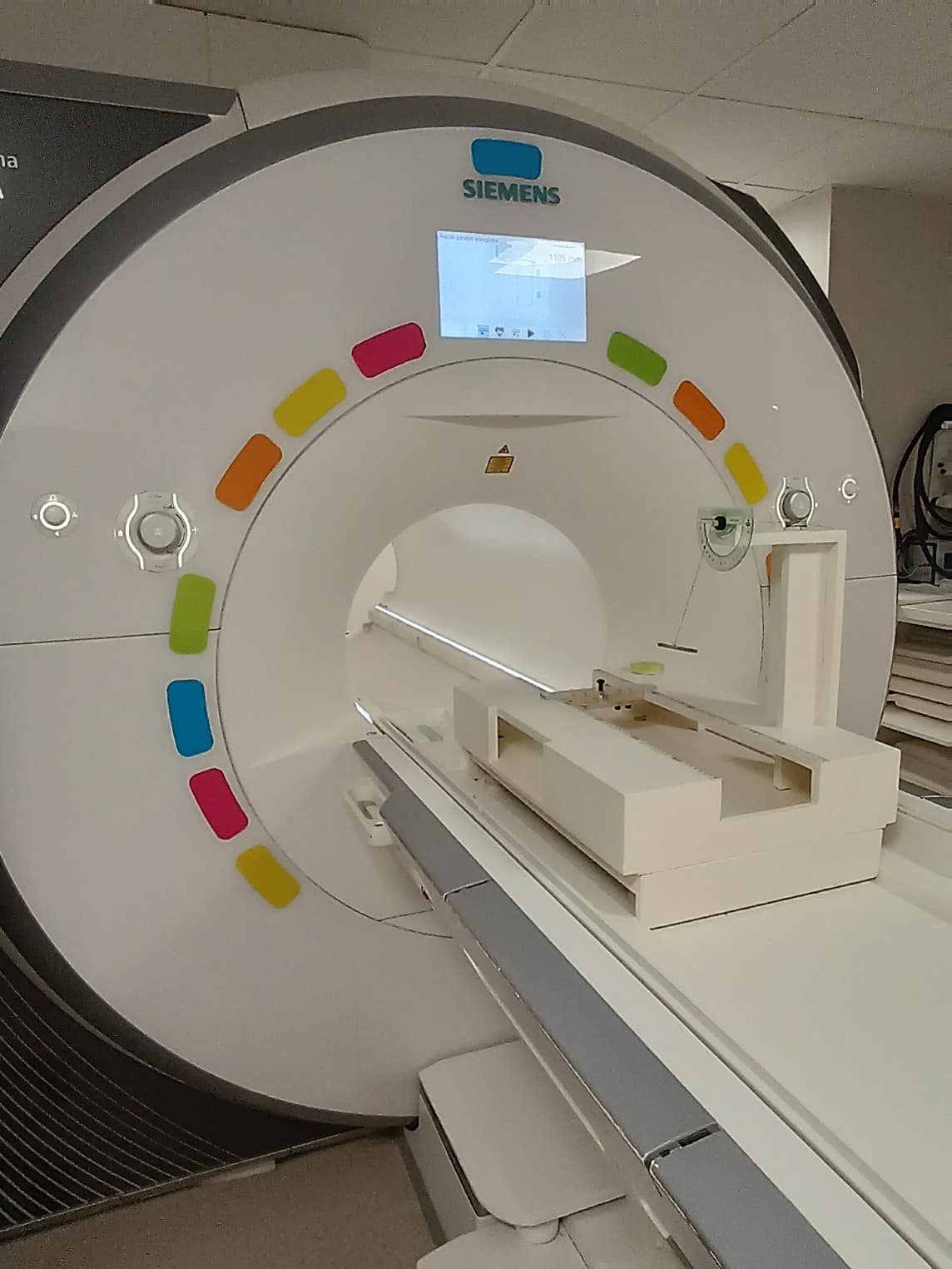Introduction of ASTM F2052 Standard: Measurement of Magnetically Induced Displacement Force on Medical Devices in Magnetic Resonance Imaging (MRI) Environments
When approaching an MRI scanner, any device containing ferromagnetic materials will be subjected to a displacement force induced by the static magnetic field of the MRI. This field remains active even when no examination is in progress. The risk therefore concerns all objects that may be brought near the machine: instruments, tools, implants, jewelry, keys, handcuffs, maintenance equipment, etc.
The displacement force depends on the spatial variation of the magnetic field. It can sometimes be more pronounced with 1.5T MRIs than with 3T or 7T systems, depending on the distribution of the magnetic field spatial gradient.
Focus on the Magnetic Field Spatial Gradient
The magnetic field spatial gradient, or Spatial Field Gradient (SFG), refers to the spatial variation of the magnetic field—in other words, the “slope” of the magnetic field around the MRI. Expressed in Teslas per meter (T/m), the maximum SFG value in current MRI systems is around 20 T/m.
Objective of ASTM F2052
The ASTM F2052 standard defines a standardized test method for measuring the displacement force induced by the MRI magnetic field on medical devices.
Principle of the ASTM F2052 Method
The test consists of suspending the medical device with a string and then bringing it close to the MRI to reach a zone where the Spatial Field Gradient is near its maximum.
Once the device is in position, the deviation angle of the string relative to the vertical (0°) is recorded. This angle is then used to calculate the magnetic displacement force exerted on the device.
This test requires a stable, non‑magnetic measurement bench, heavy enough to resist the generated forces, and equipped with instruments capable of precisely measuring both magnetic field variations and the deviation angle of the string.
Implementation in Our Test Laboratory
At Healtis, displacement force measurement according to ASTM F2052 is performed under ISO 17025 accreditation*, on a specifically designed and qualified test bench. Tests are carried out by authorized and trained personnel, using calibrated instruments that are regularly verified.
*(Healtis is ISO 17025 accredited by Cofrac Testing, Accreditation No. 1‑6320, scope available at www.cofrac.fr).
How Are ASTM F2052 Test Results Interpreted?
The ASTM F2052 test quantifies the displacement force for exposure to a given magnetic field.
The interpretation of results aims to determine the maximum Spatial Field Gradient for which the displacement force will not cause movement, in the targeted context. This requires the manufacturer to define an acceptance criterion: the minimum force necessary to cause movement of the device under clinical conditions.
The ASTM F2052 standard suggests using the weight of the device as the acceptance criterion. This is generally a conservative approach for implants, but sometimes too restrictive, allowing only a very low Spatial Field Gradient.
For certain loosely secured devices, this criterion may also be insufficient to guarantee the absence of movement.
It is therefore essential to conduct a specific reflection on the clinical context, taking into account the method of securing the device, in order to define an appropriate acceptance criterion.
Conclusion
The ASTM F2052 standard is essential for any manufacturer of metallic or magnetic medical devices wishing to evaluate the behavior of their product in MRI. It provides a standardized method to quantify the risk of device displacement induced by the magnetic field.
A revision of ASTM F2052 is currently in preparation, under ASTM Work Item WK88170. Experts, including some Healtis collaborators, are contributing to the introduction of an additional method based on direct measurement with a dynamometer.
To stay informed about the publication of this new version and all regulatory updates related to MRI safety of medical devices, follow our LinkedIn page!



